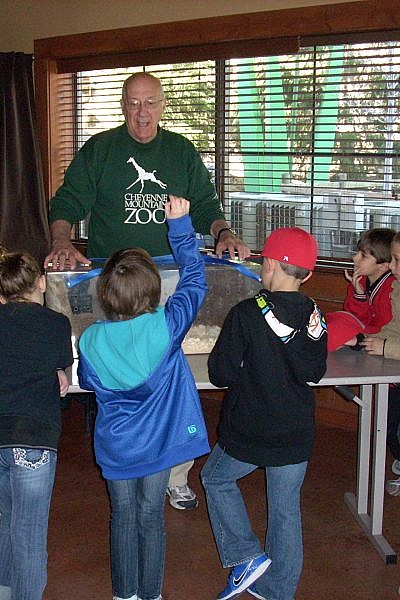Zoogeography Docent-Led Zoo Tour & Classroom Visit
Description:
This tour focuses on the worldwide distribution of animals by exploring their ecosystems. The tour addresses how animals change over time, that is, genetic change in population over time. Docents will discuss with students the influence of the earth’s climatic conditions and help them make connections to the scientific principles that help to explain the factors that contribute to diversity and adaptation.
Classroom Safari:
A 45 minute visit to your classroom by a CMZ Docent which includes a PowerPoint presentation, hands-on bio facts, activities and a vocabulary list.
Docent-Led Zoo Tour:
90-minute Docent-led tour, scheduled 4-7 days after classroom visit.
Ratio:
7-10 students per Docent-led tour group at the Zoo.
Colorado Science Standard #2: Life Science:
Students know and understand the characteristics and structure of living things, the process of life, and how living things interact with each other and their environment.
Grade Level Expectation #5 (Middle School):
Organisms and populations of organisms are dependent on their environmental interactions both with other living things and with nonliving factors.
Grade Level Expectation #7 (Middle School):
Ecosystems are dynamic in nature; their characteristics can vary over time. Disruptions to any physical or biological component of an ecosystem can lead to shifts in all of its populations.
Grade Level Expectation #8 (Middle School):
Heredity explains why offspring resemble, but are not identical to, their parents and is a unifying biological principle. Heredity refers to specific mechanisms by which characteristics or traits are passed from one generation to the next via genes.
Elaboration of GLE #8:
In addition to variations that arise from sexual reproduction, genetic information can be altered because of mutations.
Grade Level Expectation #9 (Middle School):
Fossils are mineral replacements, preserved remains, or traces of organisms that lived in the past.
Grade Level Expectation #10 (Middle School):
Genetic variations among individuals in a population give some individuals an advantage in surviving and reproducing in their environment.
Grade Level Expectation #11 (Middle School):
Adaptation by natural selection acting over generations is one important process by which species change over time in response to changes in environmental conditions.
Grade Level Expectation #12 (Middle School):
iodiversity is the wide range of existing life forms that have adapted to the variety of conditions on Earth, from terrestrial to marine ecosystems.
Endangered Species Docent-Led Tour & Classroom Visit
Description:
The middle school level Endangered Species Tour emphasizes the causes of endangerment from natural and human influences. Docents will discuss how low birth rate, slow maturation, narrow dietary habits, isolation, and loss of biodiversity contribute to endangerment. Students will learn how changes in the ecosystem, loss of habitat from natural disasters, and human activities play a large role in threatening a species’ survival. Docents will explain how the Cheyenne Mountain Zoo participates in conservation efforts through successful breeding and reintroduction programs.
Classroom Safari:
A 45 minute visit to your classroom by a CMZ Docent which includes a PowerPoint presentation, hands-on bio facts, activities and a vocabulary list.
Docent-Led Zoo Tour:
90-minute Docent-led tour, scheduled 4-7 days after classroom visit.
Ratio:
7-10 students per Docent-led tour group at the Zoo.
Colorado Science Standard #2: Life Science:
Students know and understand the characteristics and structure of living things, the process of life, and how living things interact with each other and their environment.
Grade Level Expectation #5 (Middle School):
Organisms and populations of organisms are dependent on their environmental interactions both with other living things and with nonliving factors.
**Grade Level Expectation #7 (Middle School):
**Ecosystems are dynamic in nature; their characteristics can vary over time. Disruptions to any physical or biological component of an ecosystem can lead to shifts in all of its populations.
Grade Level Expectation #10 (Middle School):
Genetic variations among individuals in a population give some individuals an advantage in surviving and reproducing in their environment.
Grade Level Expectation #11 (Middle School):
Adaptation by natural selection acting over generations is one important process by which species change over time in response to changes in environmental conditions.
Grade Level Expectation #12 (Middle School):
Biodiversity is the wide range of existing life forms that have adapted to the variety of conditions on Earth, from terrestrial to marine ecosystems.
**Tour emphasizes this Grade Level Expectation.


